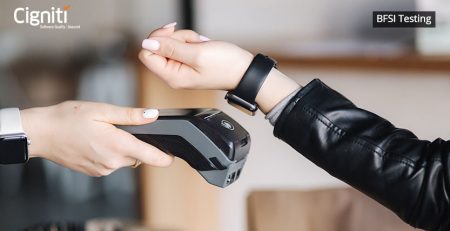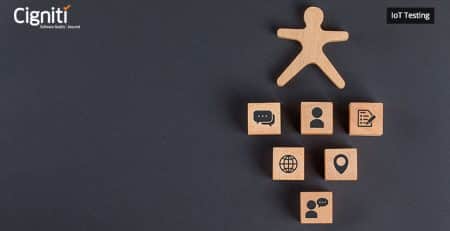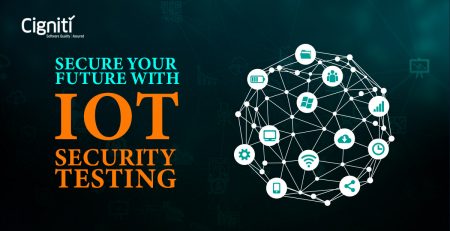The impact and need of testing IoT apps across industries
McKinsey Global Institute research states that IoT can have an economic impact of $6.2 Trillion by 2025. According to Cisco, the economic value added by the “Internet of Everything” will be close to $19 trillion by 2020.
The strong wave of technology is creating the unstoppable momentum for Internet of Things (IoT) that is revolutionizing the way businesses are run, irrespective of the industry or geography. It includes the exploding connectivity with cheaper connections and smart devices, omnipresent wi-fi availability or capability devices and sensors built into them, surge in smart phone usage, digitalization across the spheres, and the impact these are creating in terms of setting speed, reduced costs, and better economy.
How does it impact you?
Consider these possibilities:
- Mitigating a technical snag before it actually happens.
- Traveling hassle-free on smart roads that give you optimized routes based on real-time traffic and weather information and diversion warnings.
- The alarm clock waking you up at 5 AM and the AC switching-off automatically when you get out of the bed and notifying the coffee machine to prepare coffee for you.
Yes, IoT is going to create a huge impact in every part of our lives. May be with extensive support from the governments, the initial impact will be in the urban area where IoT has potential to transform everything including – transportation, communication, healthcare, banking, domestic services, and industries. But it is inevitable to keep away the agriculture and the allied sectors.
The impact of IoT across industries
IoT can address several challenges that countries are facing today. Nations can trust IoT to lead to better:
- Government: Better decision-making as the information collected will be accurate, enabling quicker reaction for natural disasters, while also helping improve transparency and accountability.
- Agriculture: Effective utilization of resources like water, fertilizers, etc. for high yield agriculture and more predictable demand supply requirements.
- Transportation: Intelligent traffic management contributing towards fast, safe, and economic transportation.
- Healthcare: Health maps on demand, and better services for emergency and disaster recovery.
- Smart Living: Improved quality of life along with Safety and Security.
- Environment: Better waste management and air quality monitoring, all of which contributes to a greener planet.
That said, a lot more needs to be invested on research & development, and infrastructure development to encourage IoT adoption.
Connected Cars – A market perspective
A study suggests that worldwide sales of connected car products will increase almost fourfold by 2020, adding more than €110 billion (US$149 billion) in revenues in the passenger car segment alone. IoT in connected cars is going to play a leading role and are already driving the machine-to-machine space.
Gartner predicts there will be a quarter-billion connected vehicles on the road by 2020, with new vehicles increasing the proportions of connected cars. Gartner said “the proliferation of vehicle connectivity will have implications across the major functional areas of telematics, automated driving, infotainment and mobility services.”
Added revenue isn’t the only benefit that car companies will see from the rapid development of the connected car. These technologies will offer buyers greater flexibility in personalizing the cars they choose and enable greater contact between manufacturers and customers.
Why is IoT testing important?
IoT is the next revolution which is swiftly transforming electronic products. In order to master and implement IoT, organizations need to work closely with mature vendors and overcome key hurdles such as:
- Lack of consensus on how to apply emerging standards and protocols to allow smart objects to connect and collaborate. It’s difficult for organizations in integrating applications and devices that use multiple network technologies and operate on various networks.
- Testing IoT before launch can help error detection and avoid failure of IoT products.
- Capturing, Routing, Analyzing, and using the insights of IoT data in timely and relevant ways.
- Privacy and security. These two are major concerns in using IoT. As most of the devices have minimal human interference, there is a potential risk of security breaches or malfunctioning devices that may cause catastrophic failures in the IoT ecosystem. Continuous testing of devices is required to avoid security breaches and guard the systems from major damage from attacks.
- Managing IoT complexities and a large amount of data that sensors generate every millisecond. For implementing an efficient IoT, organizations require huge storage, strong data management, and analytical skills.
Conclusion
Quality plays a key role in helping the IoT market succeed. Testing IoT in addressing data management, security issues, and privacy concerns helps in offering trusted products.
Cigniti has in-depth skills to identify potential bugs and failures, thus avoiding disastrous failure of products. We have helped Testing often and testing continuously is the only criteria in identifying and fixing creeping in discrepancies into the systems.
Cigniti’s experience in IoT app Testing as a Service (TaaS), a team of IoT-skilled testers, and a robust IoT testing infrastructure (– labs, simulators, test racks, etc.) support real-time testing of Big Data, Compatibility, IoT Security, Performance, Pilot, Regulatory, Reliability, Upgrade, Usability, and smart devices in a dynamic environment (RFID, Sensors). Connect with us today.





Leave a Reply